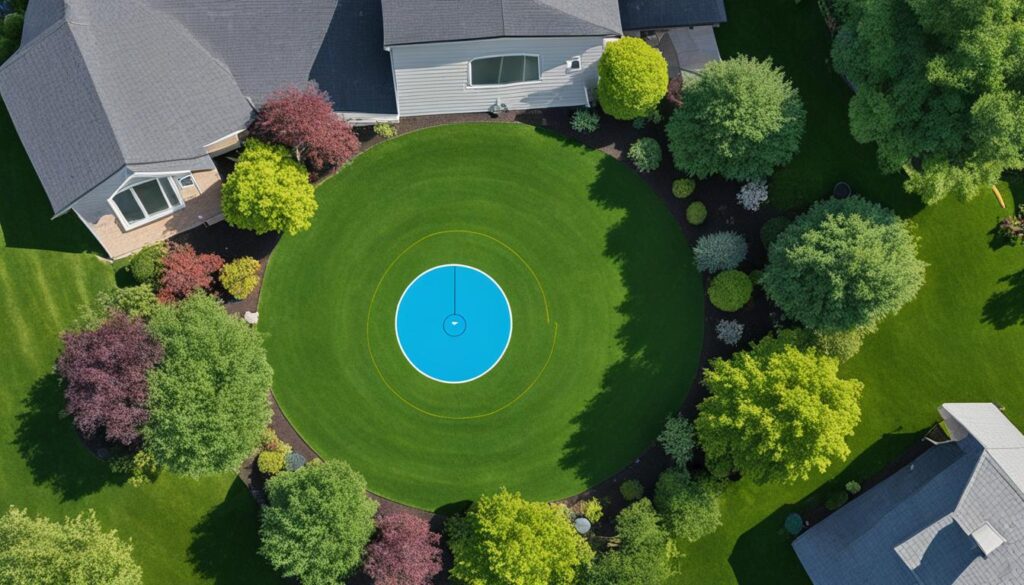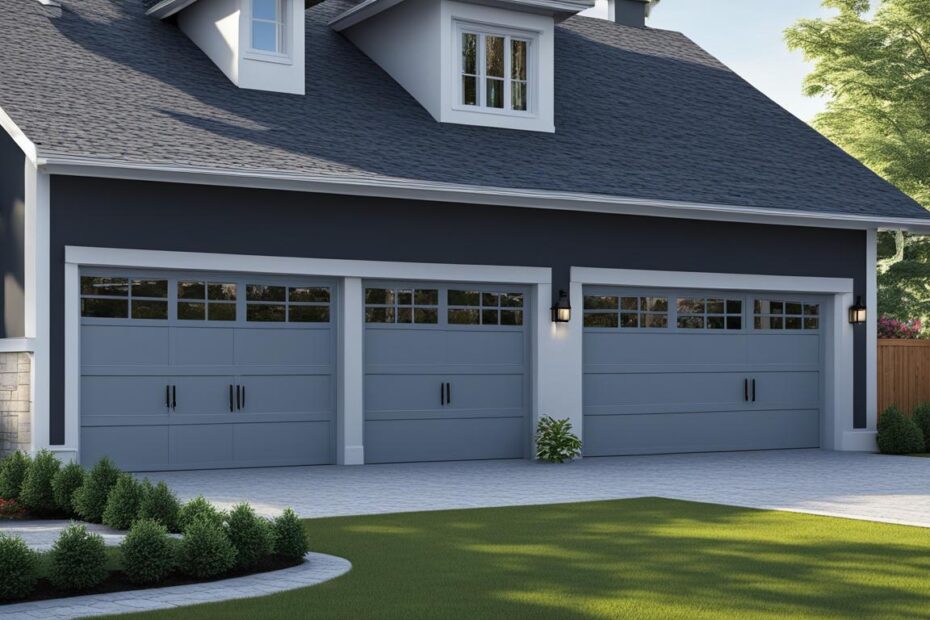When it comes to ensuring the safety and security of your home or business, one of the most effective measures you can take is installing security cameras. However, it is not enough to simply have security cameras in place. The key to maximizing their effectiveness lies in the strategic placement of these cameras.
If you’re wondering where to install security cameras, you’re in the right place. In this article, we will discuss the best locations for security camera installation and provide you with valuable tips for optimal camera placement.
When determining the optimal places to install security cameras, it is important to consider the areas that are most vulnerable to break-ins and provide the widest viewing range. According to experts, the following locations are recommended for security camera placement:
Key Takeaways:
- Ground-floor doors and windows are prime targets for break-ins, so make sure to install cameras in these areas.
- Main stairs or hallways are high-traffic areas where cameras can capture the movements of intruders.
- Common areas, such as living rooms or kitchens, are crucial for monitoring and detecting any suspicious activity.
- Driveways and yards should not be neglected, as they provide an opportunity to catch any potential perpetrators before they reach your property.
- Don’t forget about the second floor, as burglars can sometimes attempt to gain access through upper-level windows or balconies.
By strategically placing security cameras in these vulnerable areas, you can significantly enhance your surveillance coverage and deter potential intruders. However, there are a few other factors to consider for effective camera placement.
Tips for Effective Security Camera Placement
When it comes to installing security cameras, choosing the right position is crucial for optimal surveillance coverage. Whether you’re installing outdoor or indoor cameras, strategic placement plays a significant role in enhancing security measures. Here are some essential tips to help you make informed decisions:
1. Assess Vulnerable Points:
Start by identifying the areas that are most susceptible to break-ins or unauthorized access. These might include ground-floor doors and windows, main entryways or hallways, common areas, driveways, yards, and even second floors, depending on the layout of your property.
2. Consider Camera Visibility:
Ensure that your security cameras are visible to deter potential intruders. Visible cameras act as a deterrent and can significantly reduce the likelihood of criminal activities. Place cameras in prominent locations where they can be easily seen by anyone approaching the premises.
3. Outdoor Security Camera Placement:
When installing outdoor cameras, consider factors such as weather resistance, lighting conditions, and the viewing range of the camera. Mount cameras at strategic locations to cover entry points such as doors, windows, and garages. You can also consider placing cameras near outdoor valuables or areas with high foot traffic.
4. Indoor Security Camera Installation:
For indoor cameras, focus on monitoring high-traffic areas or rooms where valuable items are kept. Install cameras near entryways, staircases, hallways, and common spaces like living rooms or kitchens. Keep in mind the camera’s field of view and adjust its position accordingly for maximum coverage.
5. Minimize Glare and Reflection:
Be mindful of camera positioning to minimize glare and reflection, especially when installing cameras near windows or glass surfaces. Adjust the camera angle to avoid capturing excessive light or obstructions that can hinder image quality and overall surveillance effectiveness.
6. Optimal Number of Cameras:
Consider the size of your property and the level of coverage you need when determining the number of cameras to install. Strike a balance between comprehensive surveillance and practicality to avoid overextending the camera network while still ensuring adequate monitoring of critical areas.
By following these tips and guidelines, you can strategically position your security cameras to enhance your overall security system and protect your property effectively.

Conclusion
Choosing the optimal places to install security cameras is crucial for enhancing home or business safety. By strategically placing security cameras in vulnerable areas, such as ground-floor doors and windows, main stairs or hallways, common areas, driveways, yards, and second floors, homeowners can increase their surveillance coverage.
Additionally, considerations like camera visibility, durability, reflection and glare, and the total number of cameras should be taken into account for optimal results. Ensuring that the cameras are placed in prominent locations where they can easily capture clear footage is essential.
Investing in a reliable home security camera system is vital for protecting your property and loved ones. Surveillance cameras provide a valuable deterrent to potential intruders and enable homeowners to monitor their property remotely. Installing a comprehensive home security camera system not only enhances security but also offers peace of mind.
By following these security camera installation tips and guidelines, individuals can make informed decisions about security camera placement and enhance their overall security measures. With a well-placed and properly installed home security camera system, homeowners can deter criminals, monitor their property, and ensure the safety and well-being of their families.
FAQ
Where should I install security cameras?
Security cameras should be installed in areas that are most vulnerable to break-ins, such as ground-floor doors and windows, main stairs or hallways, common areas, driveways, yards, and second floors. These locations will provide the widest viewing range and enhance surveillance coverage.
How do I choose the right position for security cameras?
When choosing the position for security cameras, consider factors like camera visibility, durability, reflection and glare, and the total number of cameras needed. Outdoor cameras should be placed at a height that prevents tampering and offers a clear view, while indoor cameras should cover areas of high traffic or valuable assets.
What are some recommended locations for installing security cameras?
Recommended locations for installing security cameras include entrances and exits, garages, backyards, gates, and areas with expensive equipment or valuable possessions. It is also important to ensure cameras cover blind spots and have a clear view of potential points of entry.
Are there any tips for outdoor security camera placement?
When placing outdoor security cameras, consider the mounting height, angle, and weatherproofing. Cameras should be installed high enough to prevent tampering, at a downward angle for clear and unobstructed views, and protected from the elements with weatherproof housing.
How can I optimize indoor security camera installation?
For optimal indoor security camera installation, consider placing cameras in areas with a high volume of human activity, such as common areas, hallways, and stairways. Ensure the cameras provide coverage for vulnerable areas like entrances and exits, and position them to monitor valuable assets or sensitive areas.
What should I consider when determining the number of security cameras needed?
When determining the number of security cameras needed, consider the size and layout of the property, the specific areas you want to monitor, and the level of surveillance coverage desired. Consulting with a security professional can help determine the ideal number of cameras for your needs.
